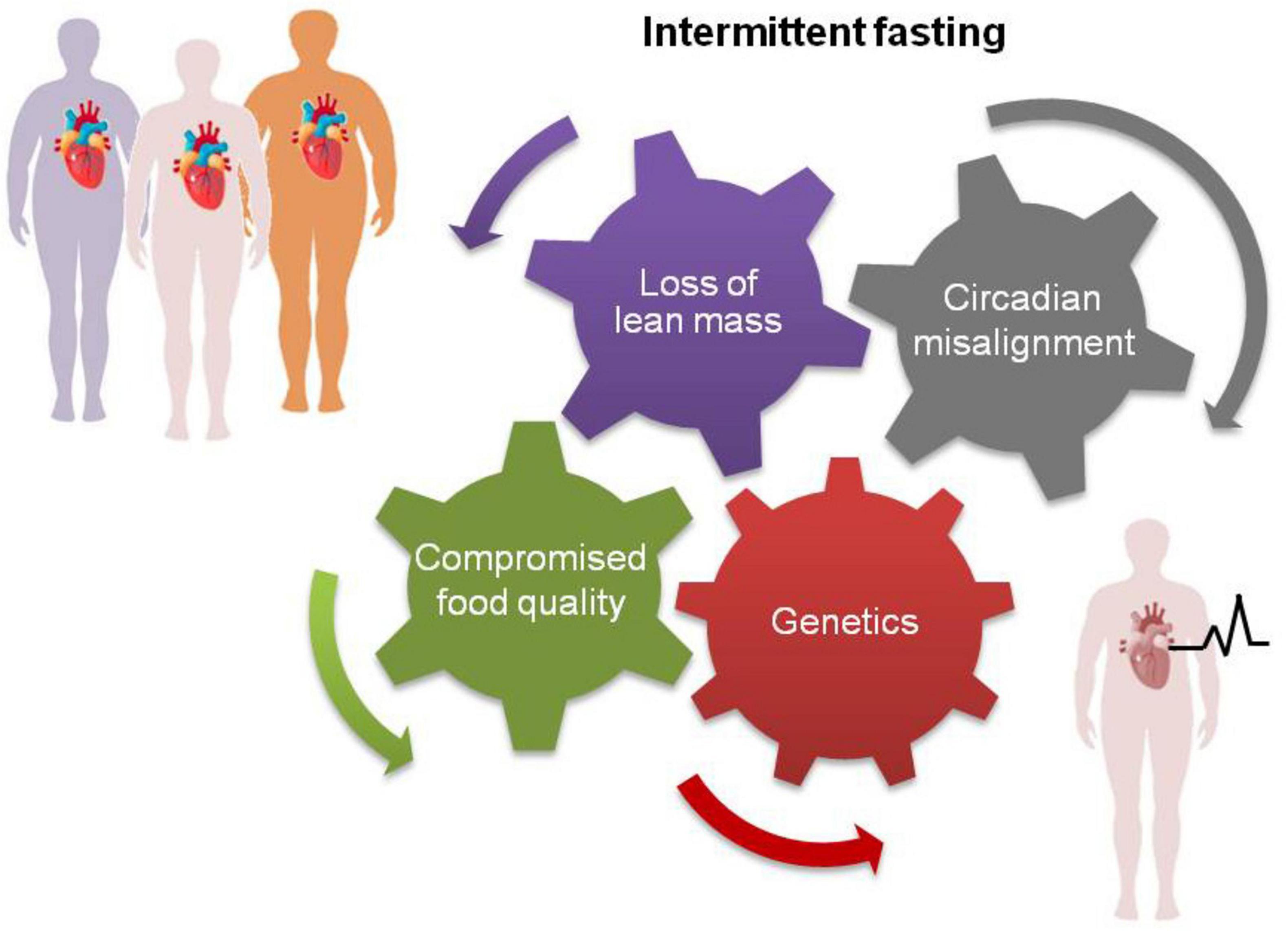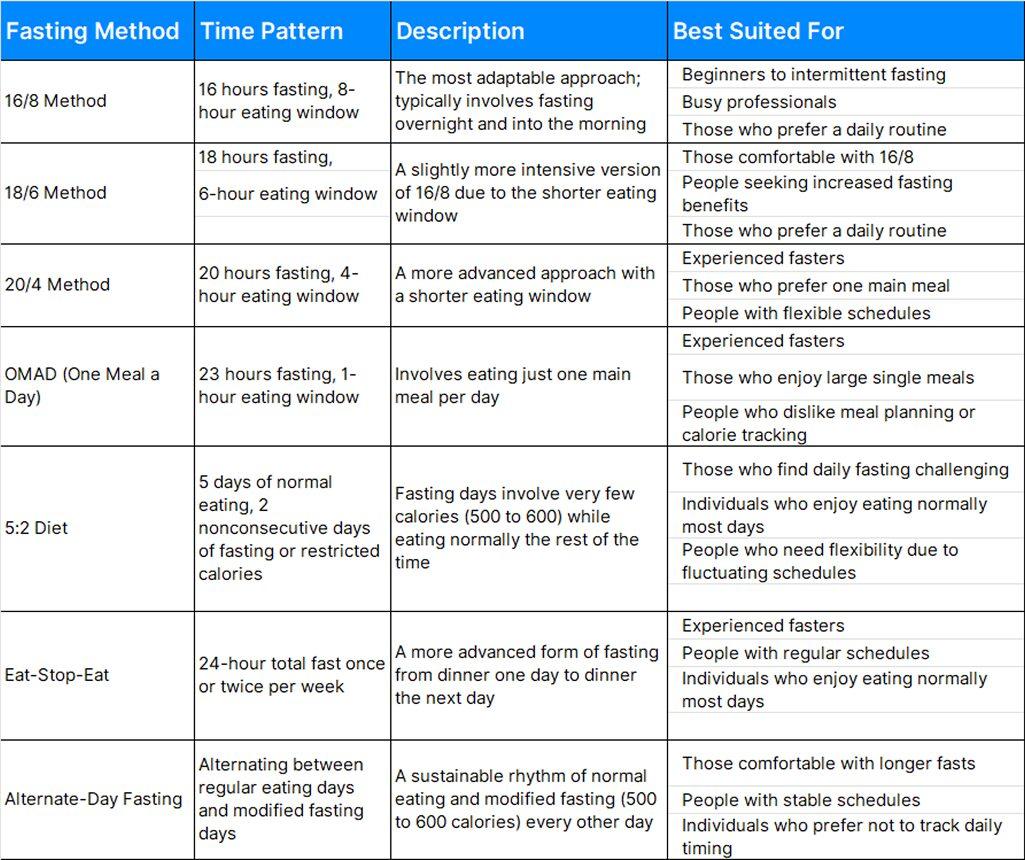In the ever-evolving landscape of health and wellness, some trends flicker briefly before fading into obscurity, while others resurface with renewed vigor, capturing the collective imagination once more. As 2025 unfolds, intermittent fasting-a practice rooted in ancient traditions yet propelled by modern science-has surged back into the spotlight. But what is fueling this resurgence? Beyond the buzzwords and social media challenges lies a complex interplay of new research, shifting lifestyles, and a global quest for sustainable well-being. This article delves into the reasons why intermittent fasting is booming again, exploring the cultural, scientific, and personal factors that make it resonate so powerfully in today’s world.
Table of Contents
- The Science Behind Intermittent Fasting’s Renewed Popularity
- How Technology Is Enhancing Fasting Practices in 2025
- Tailoring Intermittent Fasting to Modern Lifestyles and Wellness Goals
- Common Challenges and Practical Tips for Sustaining Your Fast
- Integrating Intermittent Fasting with Holistic Health Approaches
- Frequently Asked Questions
- In Retrospect
The Science Behind Intermittent Fasting’s Renewed Popularity
Recent advancements in metabolic research have reignited interest in time-restricted eating patterns, revealing compelling mechanisms that explain why intermittent fasting (IF) is more than just a trendy diet. At its core, IF leverages the body’s natural circadian rhythms, optimizing energy use and cellular repair processes during fasting windows. This synchronization enhances metabolic flexibility-the ability to switch efficiently between burning carbohydrates and fats-leading to improved insulin sensitivity and reduced inflammation.
Moreover, breakthrough studies have highlighted the role of autophagy, a vital cellular “cleanup” process activated during fasting periods. Autophagy helps eliminate damaged cells and regenerates tissue, contributing to longevity and disease prevention. Unlike traditional calorie restriction, IF stimulates autophagy without continuous energy deprivation, making it more sustainable and appealing to a broader audience.
Key physiological benefits driving the resurgence of intermittent fasting include:
- Enhanced hormone regulation, including increased human growth hormone (HGH) secretion.
- Improved brain health via boosted production of brain-derived neurotrophic factor (BDNF).
- Reduction in oxidative stress and systemic inflammation.
- Support for weight management through appetite modulation.
| Fasting Window | Metabolic Impact | Common Benefits |
|---|---|---|
| 16/8 (16 hours fasting) | Improved insulin sensitivity | Fat loss, mental clarity |
| 5:2 (5 days normal, 2 low-calorie) | Cellular repair activation | Reduced inflammation, longevity |
| 24-hour fasts (once or twice weekly) | Autophagy stimulation | Detoxification, hormonal balance |
These scientific insights not only validate the effectiveness of intermittent fasting but also empower users to tailor their fasting routines based on individualized health goals, making the practice both accessible and adaptable for 2025 and beyond.
How Technology Is Enhancing Fasting Practices in 2025
In 2025, the intersection of technology and fasting has evolved beyond simple timer apps and calorie counters. Advanced wearable devices are now capable of monitoring metabolic markers in real-time, allowing users to fine-tune their fasting windows with unprecedented precision. These gadgets track indicators such as blood glucose levels, ketone production, and hydration status, providing actionable insights that tailor fasting routines to individual physiological responses.
Moreover, AI-powered fasting coaches have become popular tools, offering personalized meal planning and adaptive fasting schedules based on user data. These intelligent systems analyze lifestyle habits, stress levels, and sleep patterns to recommend optimal fasting periods, making the practice more sustainable and effective. Integration with smart home devices enhances this experience by automating environmental factors like lighting and temperature, which can influence hunger and metabolic rate.
Key technological innovations enhancing fasting include:
- Continuous glucose monitors with fasting-specific feedback
- AI-driven nutrition and fasting planners
- Smart hydration reminders synced with fasting phases
- Virtual support communities powered by social algorithms
| Technology | Function | User Benefit |
|---|---|---|
| Wearable Metabolic Trackers | Monitor fasting biomarkers | Personalized fasting windows |
| AI Fasting Coach | Adaptive fasting plans | Increased adherence and results |
| Smart Hydration Systems | Optimize fluid intake | Reduced fasting discomfort |
| Virtual Fasting Communities | Social support and motivation | Enhanced accountability |

Tailoring Intermittent Fasting to Modern Lifestyles and Wellness Goals
Modern life demands flexibility, and the resurgence of intermittent fasting (IF) in 2025 is largely due to its adaptability. Unlike rigid dieting plans, IF can be personalized to fit diverse schedules, from the busy professional squeezing meals between meetings to the night owl who prefers a later eating window. The key lies in understanding your own body’s rhythm and choosing a fasting model that enhances-not disrupts-your daily flow.
Wellness goals have evolved beyond just weight loss. Today’s fasting enthusiasts seek benefits such as mental clarity, improved metabolic health, and sustained energy levels. This shift has encouraged the integration of IF with mindfulness practices, nutrient timing, and even exercise routines tailored to maximize results without sacrificing well-being.
- Flexible Windows: Choose from 12:12, 16:8, or even 20:4 fasting schedules based on your lifestyle.
- Focus on Quality: Emphasize nutrient-dense foods during eating periods to support overall health.
- Personalized Pairings: Combine IF with yoga, meditation, or strength training for a holistic approach.
| Fasting Model | Ideal For | Wellness Benefit |
|---|---|---|
| 12:12 | Beginners & Busy Schedules | Improved digestion & energy |
| 16:8 | Weight management & focus | Fat loss & cognitive clarity |
| 20:4 | Advanced practitioners | Enhanced autophagy & metabolic health |

Common Challenges and Practical Tips for Sustaining Your Fast
Embarking on an intermittent fasting journey often presents unexpected hurdles, but understanding these common challenges can empower you to navigate them with confidence. One of the biggest obstacles people face is managing hunger pangs during fasting windows. These can feel overwhelming at first, but your body typically adjusts after a few days. Staying hydrated with water, herbal teas, or black coffee can help curb hunger and keep energy levels steady.
Another frequent challenge is maintaining social commitments that revolve around food. Skipping meals or eating differently from friends and family can feel isolating. To overcome this, consider planning fast-friendly activities or communicating your fasting schedule in advance. Flexibility is key-allowing yourself occasional modifications to your fasting window can prevent burnout and keep your routine sustainable.
Sleep disturbances and energy fluctuations are also common when starting intermittent fasting. To combat these, prioritize a consistent sleep schedule and incorporate gentle movement like stretching or walking. Listening to your body’s signals and adjusting your fasting times can make a significant difference in how you feel throughout the day.
- Stay hydrated: Drink plenty of fluids to reduce hunger and support metabolism.
- Plan meals wisely: Focus on nutrient-dense foods during eating windows to fuel your body effectively.
- Be flexible: Adapt fasting schedules around social events and personal energy levels.
- Listen to your body: Adjust or pause fasting if you experience persistent fatigue or discomfort.
| Challenge | Practical Tip |
|---|---|
| Hunger Pangs | Hydrate and distract with light activities |
| Social Pressure | Communicate plans and stay flexible |
| Energy Slumps | Prioritize sleep and gentle exercise |
| Consistency | Build routine gradually, avoid extremes |

Integrating Intermittent Fasting with Holistic Health Approaches
In 2025, intermittent fasting is no longer viewed as a standalone diet trend but as a vital component of a comprehensive wellness lifestyle. Its integration with holistic health approaches-such as mindfulness, balanced nutrition, and personalized fitness-creates a synergistic effect that enhances overall well-being. By aligning eating patterns with the body’s natural rhythms, intermittent fasting complements practices that emphasize mental clarity, stress reduction, and sustainable energy levels.
Many practitioners now recommend coupling fasting schedules with daily mindfulness rituals. This combination encourages individuals to listen to their bodies more closely, fostering a deeper awareness of hunger cues and emotional triggers. Additionally, when paired with nutrient-dense whole foods and tailored movement therapies, intermittent fasting supports not just weight management, but also improved digestion, hormonal balance, and immune resilience.
To illustrate this holistic integration, consider the following framework:
- Mindfulness: Meditation or deep-breathing exercises during fasting periods to reduce cortisol levels.
- Nutrition: Emphasis on anti-inflammatory, plant-based foods during eating windows.
- Fitness: Low-impact, restorative activities like yoga or tai chi synchronized with fasting schedules.
- Sleep: Prioritizing quality rest to enhance fasting benefits and recovery.
| Holistic Element | Benefit | Example Practice |
|---|---|---|
| Mindfulness | Reduced stress, enhanced focus | 10-min morning meditation |
| Nutrition | Improved gut health, sustained energy | Plant-based meals during eating windows |
| Fitness | Increased flexibility, better circulation | Evening yoga sessions |
| Sleep | Optimized recovery and hormone regulation | Consistent 7-8 hour sleep schedule |
By embracing this integrative approach, intermittent fasting transcends its role as a mere dietary protocol and becomes a meaningful practice that nurtures the mind, body, and spirit. This holistic mindset is key to why the fasting movement is resonating more deeply in 2025, empowering individuals to achieve lasting health transformations.
Frequently Asked Questions
Q&A: Why Intermittent Fasting Is Booming Again in 2025
Q1: What exactly is intermittent fasting, and why is it making a comeback in 2025?
A1: Intermittent fasting (IF) is an eating pattern that cycles between periods of eating and fasting. Unlike traditional diets that focus on what to eat, IF focuses on when to eat. Its resurgence in 2025 can be attributed to a blend of fresh scientific research, evolving lifestyle trends, and a growing emphasis on metabolic health and longevity.
Q2: How has new research influenced the renewed interest in intermittent fasting?
A2: Recent studies have shed light on how intermittent fasting can improve cellular repair, reduce inflammation, and enhance brain function. This new wave of evidence suggests that IF may support not only weight management but also overall wellness, making it more appealing to a health-conscious public eager for sustainable habits.
Q3: Are there new variations of intermittent fasting that have contributed to its popularity?
A3: Absolutely. While the classic 16:8 method (16 hours fasting, 8 hours eating) remains popular, innovative tweaks like circadian rhythm fasting-aligning eating windows with daylight hours-and personalized fasting protocols based on genetics and microbiome data have captured the imagination of many. These tailored approaches offer flexibility and a sense of personalization that resonates in 2025.
Q4: How does intermittent fasting fit into the broader wellness and lifestyle trends of 2025?
A4: In a world increasingly focused on holistic health, sustainability, and mental clarity, intermittent fasting aligns perfectly. It requires minimal resources, can be adapted to various diets (vegan, keto, Mediterranean), and promotes mindfulness about eating patterns. Moreover, with the rise of digital health tracking and AI coaching, people can monitor and optimize their fasting journeys like never before.
Q5: Is intermittent fasting safe for everyone, or are there risks involved?
A5: While many find intermittent fasting beneficial, it’s not a one-size-fits-all solution. People with certain medical conditions, pregnant or breastfeeding women, and those with a history of eating disorders should approach IF cautiously and consult healthcare providers. The renewed popularity in 2025 is accompanied by better awareness and guidelines, helping individuals find balanced and safe fasting practices.
Q6: What role does technology play in the intermittent fasting boom?
A6: Technology is a key driver. Apps that track fasting windows, wearables that monitor metabolic markers, and AI-driven nutrition advice have made IF more accessible and personalized. Virtual communities and social media also provide support and motivation, turning fasting from a solitary challenge into a shared lifestyle movement.
Q7: Looking ahead, will intermittent fasting remain a fad or become a lasting health strategy?
A7: Given its deepening scientific backing, adaptability, and integration with modern technology, intermittent fasting in 2025 appears poised to evolve from a trend into a sustainable health practice. Its focus on timing rather than restrictive eating offers a flexible framework that can adapt as our understanding of nutrition and metabolism grows.
This Q&A unpacks why intermittent fasting is not just returning but thriving in 2025, blending tradition with innovation in the pursuit of better health.
In Retrospect
As intermittent fasting continues to capture the spotlight in 2025, its resurgence speaks to more than just a fleeting health trend-it reflects a deeper shift toward mindful living and personalized wellness. Whether driven by new scientific insights, evolving lifestyle needs, or a quest for simplicity in a complex world, intermittent fasting invites us to rethink not just what we eat, but when and how we nourish ourselves. In embracing this timeless practice with a modern twist, we may find that the true power of fasting lies not in restriction, but in the balance it helps us achieve.
